
‘Spangle’ Pendant
Mid 6th-Mid 7th Century AD
Metal
Trapezoid “spangle” made of white washed metal sheet, with punched dots around the edges. This may have been worn on a necklace, or it could have been mounted on another object as decoration.
Reference: CANCM:1978.3.1120
Can be found: The Anglo-Saxon Kingdom of Kent





















Ansate Brooch
5th-8th Centuries AD
Copper Alloy
Brooch. This type of brooch is sometimes called a ‘caterpillar’ brooch on account of their shape.
Presented by Canterbury Archaeological Trust
Reference: CANCM:1980.12.719
Can be found: The Anglo-Saxon Kingdom of Kent





















Bead
5th – 8th Century AD
Glass
Glass Bead.
Reference: Found in Canterbury in 1979 by Mr A. Waters. No accession number
Can be found: The Anglo-Saxon Kingdom of Kent





















Beads
5th – 8th Century AD
Glass and Copper Alloy
Brass wire strung with two opaque yellow ‘annular’ beads and one unpolished cobalt blue ‘annular’ bead. This may have been a breast ornament – it would have been pinned onto a piece of clothing.
Reference: CANCM:1978.3.174
Can be found: The Anglo-Saxon Kingdom of Kent





















Brooch
5th – 8th Century AD
Copper Alloy
Equal arm brooch, set with garnets in gilt copper.
Found in Bourne Park, Kent, UK. by Mr. T. Sewell.
Reference: CANCM:1991.80.1
Can be found: The Anglo-Saxon Kingdom of Kent





















Buckle
5th-8th Century AD
Copper Alloy
Oval copper alloy buckle with buckle plate and tongue complete.
Reference: CANCM:nn
Can be found: The Anglo-Saxon Kingdom of Kent





















Buckle and Buckle Plate
5th – 8th Century AD
Silver gilt
Buckle, broken into two pieces, with triangular plate. Such buckles were normally found in graves of high status males and are often decorated with garnets. This is a slightly cheaper version, but would still have belonged to a rich man.
Found in Littlebourne; Long Meadow, Well Chapel, Kent, UK. by Mr. B. Riley.
Reference: CANCM:2003.389.1-3
Can be found: The Anglo-Saxon Kingdom of Kent





















Comb
8th Century AD
Antler
Fragment of double-sided antler comb. The comb is decorated with a series of ring-and-dot motifs in a triangular arrangement at its end.
Presented by Canterbury Archaeological Trust
Reference: CANCM:1986.37.382
Can be found: The Anglo-Saxon Kingdom of Kent





















Comb
8th Century AD
Antler, iron and bone
Single-sided comb with antler handle, iron nails and bone teeth.
Excavated from Christ Church College 1993. Presented by Canterbury Archaeological Trust
Reference: CANCM:1979.64.1331
Can be found: The Anglo-Saxon Kingdom of Kent





















Comb
9th Century AD
Bone
Worked Bone single-sided comb.
Excavated from the Marlowe Car Park 1979. Presented by Canterbury Archaeological Trust
Reference: CANCM:1980.12.269
Can be found: The Anglo-Saxon Kingdom of Kent





















Comb Case
6th Century AD
Antler
The Anglo-Saxons kept their combs in cases to stop the teeth from breaking.
Excavated in Stour Street in 1986. Presented by Canterbury Archaeological
Reference: CANCM:nn
Can be found: The Anglo-Saxon Kingdom of Kent





















Disc Brooch
Mid 5th-6th Century AD
Copper Alloy
Copper alloy disc brooch decorated with a quincunx (group of five) of cup-and-dot decorations, a favoured decorative motif in this period.
Reference: Excavated in 1978 from the Marlowe Car Park. Presented by Canterbury Archaeological Trust CANCM:1980.12.1160
Can be found: The Anglo-Saxon Kingdom of Kent
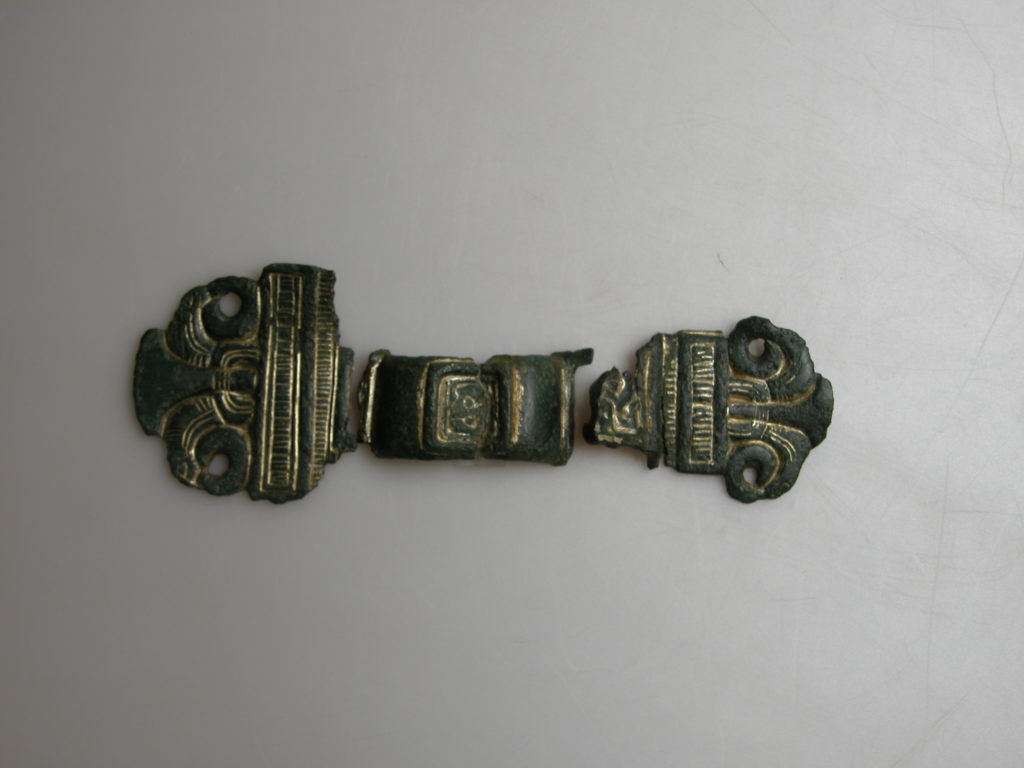

Gilt Brooch or Mount
Late 6th – Early 7th Century AD
Copper alloy and gold
Gilded copper alloy small-long brooch or mount in four pieces.
Presented by Canterbury Archaeological Trust
Reference: CANCM:1988.57.3
Can be found: The Anglo-Saxon Kingdom of Kent
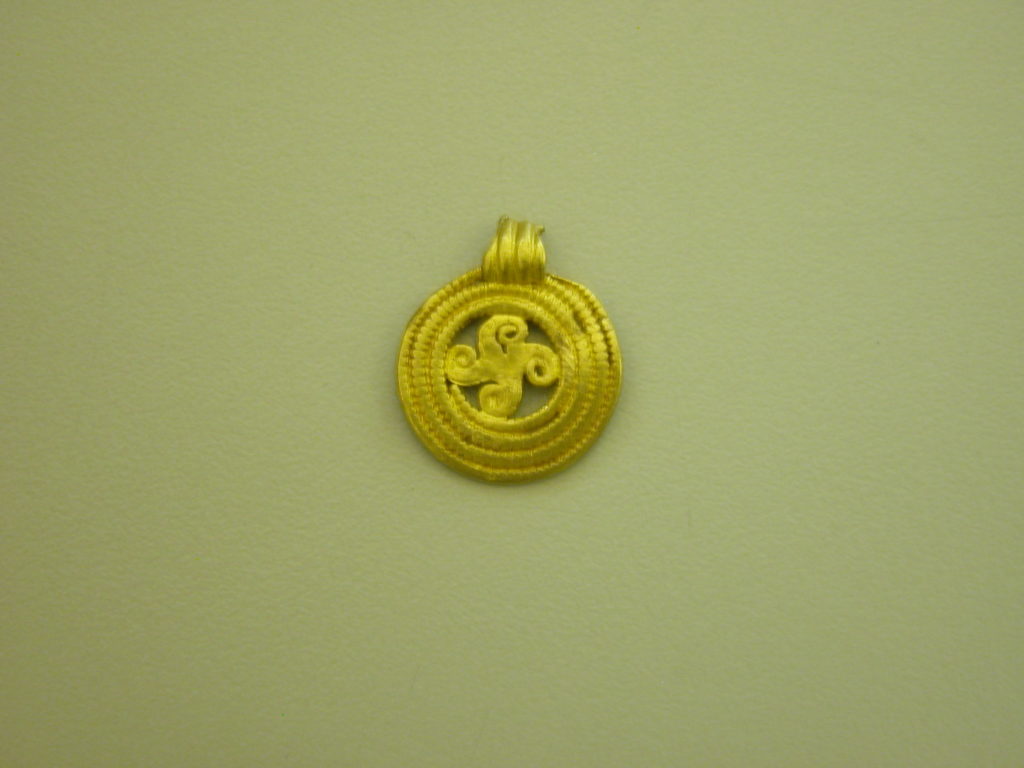

Gold Pendant
6th – 7th Century AD
Gold
Pendant. The central swastika, or Tetraskele, was used on many items in the Early Anglo-Saxon period.
Found by a metal detectorist near Manston in Kent. Acquired for the museum through the Portable Antiquities scheme.
Reference: CANCM:2014.8
Can be found: The Anglo-Saxon Kingdom of Kent





















Key
6th-7th Century AD
Copper Alloy
Key with shepherd’s crook suspension loop. It was cast in bronze and finished by hand with deeply cut out carving.
Excavated in 1978 from the Marlowe Car Park. Presented by Canterbury Archaeological Trust
Reference: CANCM:1978.3.1278
Can be found: The Anglo-Saxon Kingdom of Kent





















Owl Pendant
5th – 8th Century AD
Copper Alloy
Fragment with gilt front; chip carved decoration showing a stylised owl.
Found in Barham, Kent, UK. by Mr. M. Rundle.
Reference: CANCM:1993.28
Can be found: The Anglo-Saxon Kingdom of Kent


Penny of King Offa
c794 AD
Silver
Coin. Minted in Canterbury for Archbishop Aethelheard during the reign of King Offa. We can date the coin to within just a few years, as Aethelheard became Archbishop in 793 and Offa died in 796.
Found by Mr D. Hunt. Purchased with the assistance of the Victoria and Albert Museum, Mr D. Hunt and Henry Moorhead and Company.
Reference: CANCM:2010.69
Can be found: The Anglo-Saxon Kingdom of Kent


Pin
Early 7th Century AD
Copper Alloy with gold and garnet
Copper Alloy pin with a garnet set into the head. There is a piece of gold foil behind the garnet to enhance the colour of the stone.
Reference: Excavated in 1960 in Gravel Walk, Canterbury. Presented by Canterbury Archaeological Trust No accession number
Can be found: The Anglo-Saxon Kingdom of Kent





















Pinbeaters
7th and 8th Century AD
Bone
Five worked bone double-ended pinbeaters. Pinbeaters were used while weaving to adjust the placement of threads on the loom.
Reference: CANCM:nn
Can be found: The Anglo-Saxon Kingdom of Kent





















Pins
5th-8th Century AD
Bone
Three worked bone pins. These may have been used to hold a hair style, or perhaps to secure an item of clothing.
Reference: CANCM:nn
Can be found: The Anglo-Saxon Kingdom of Kent


Sceat
5th – 8th Century AD
Silver
Coin. Probably known as ‘pennies’ when they were in use, these coins were minted in Kent, Frisia and Jutland. The earliest sceatta in Britain were minted in Kent and the Thames estuary.
Found in Elham; Henbury Manor, Kent, UK. by Mr. G.T. Hall.
Reference: CANCM:1993.44.1
Can be found: The Anglo-Saxon Kingdom of Kent


Sceat
5th – 8th Century AD
Silver
Coin. Probably known as ‘pennies’ when they were in use, these coins were minted in Kent, Frisia and Jutland. The earliest sceatta in Britain were minted in Kent and the Thames estuary.
Found in Elham; Henbury Manor, Kent, UK. by Mr. G.T. Hall.
Reference: CANCM:1993.44.2
Can be found: The Anglo-Saxon Kingdom of Kent
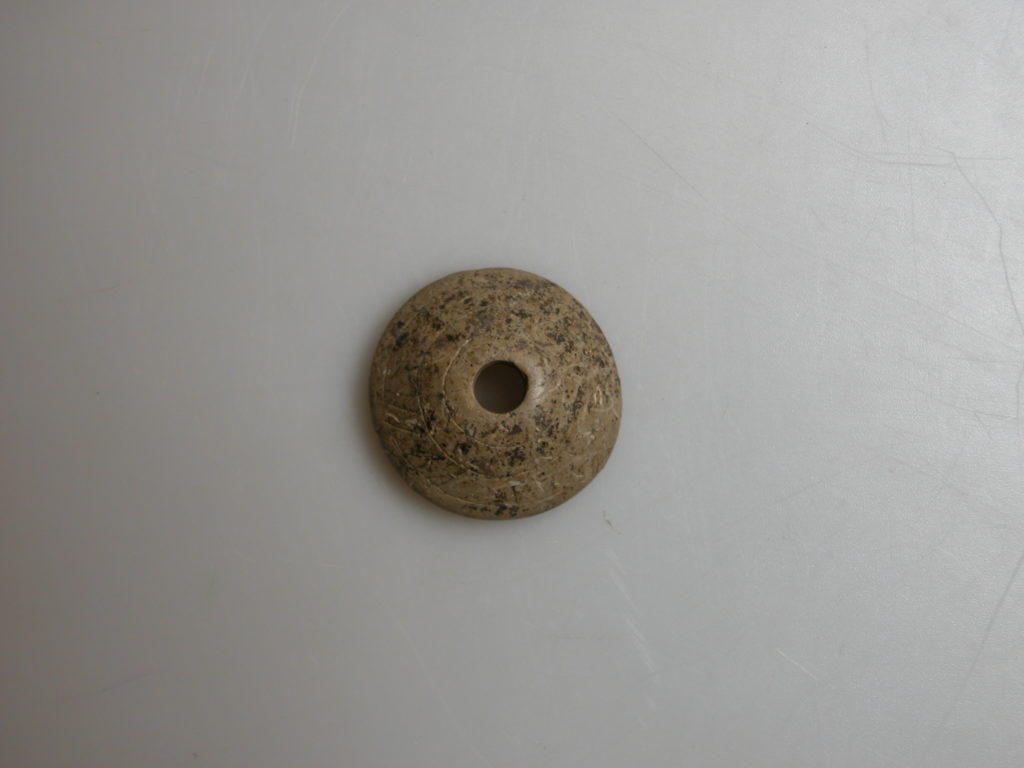

Spindle Whorl
8th Century AD
Bone
Bone spindle whorl with incised decoration. Spindle whorls were used when spinning wool into yarn. Attached to the spindle, they helped maintain the speed of the spin used to twist the raw wool into a long thread. Using a spindle whorl helped maintain the same thickness of the wool as it was spun.
Reference: CANCM:nn
Can be found: The Anglo-Saxon Kingdom of Kent
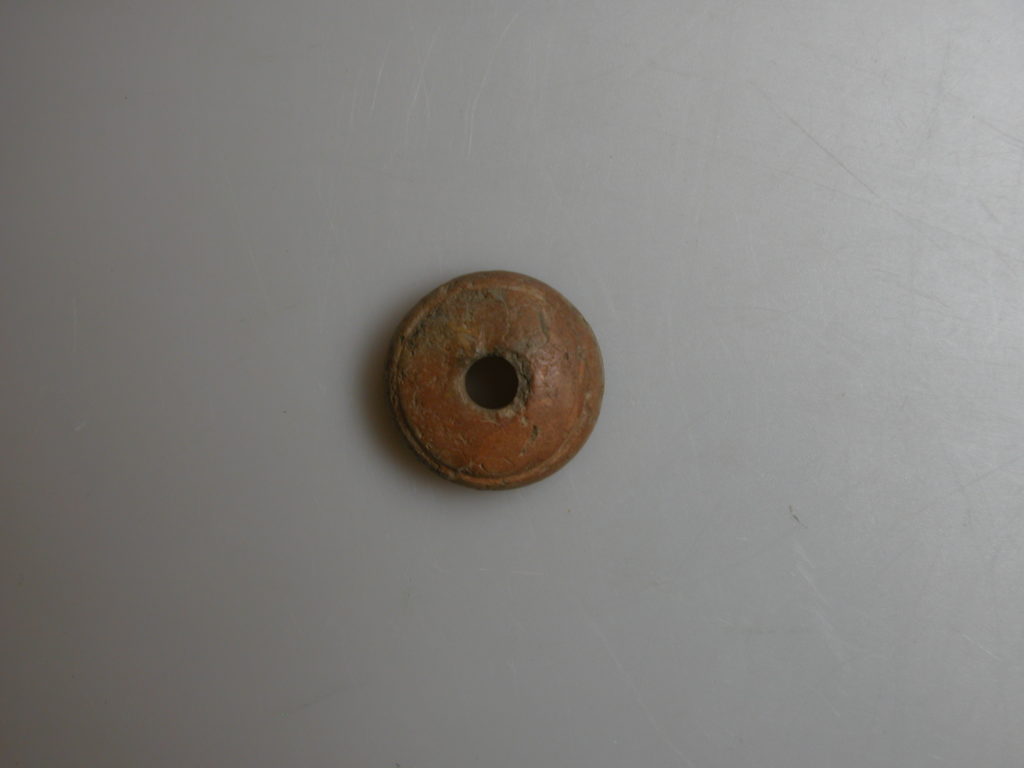

Spindle Whorl
8th Century AD
Bone
Two bone Spindle whorl.
Reference: CANCM:nn
Can be found: The Anglo-Saxon Kingdom of Kent


Spindle Whorls
8th Century AD
Ceramic
Two Ceramic spindle whorls.
Reference: CANCM:nn
Can be found: The Anglo-Saxon Kingdom of Kent





















Square Headed Brooch
Mid 6th Century AD
Copper Alloy
Square headed brooch decorated with the ring-and-dot motifs popular in the early Saxon period. This type of brooch is one of the most common worn by the Anglo-Saxons, and was used to secure clothing.
Reference: Excavated in 1978 from the Marlowe Car Park. Presented by Canterbury Archaeological Trust CANCM:1978.3.1124
Can be found: The Anglo-Saxon Kingdom of Kent





















Square Headed Brooch
5th – 8th Century AD
Copper Alloy
Square-headed brooch fragment with gilding
Found in Chartham, Kent, by Mr. N. Austin.
Reference: CANCM:1996.6
Can be found: The Anglo-Saxon Kingdom of Kent





















Sword Ring
5th – 8th Century AD
Silver Gilt
Silver-gilt sword ring inlaid with niello.
Reference: CANCM:2003.390
Can be found: The Anglo-Saxon Kingdom of Kent





















The Canterbury Pendant
Early 7th Century AD
Gold, Garnets, Glass
A fine example of an Anglo Saxon pendant made from a gold disc inlaid with garnets and glass. The empty central spaces would have been filled with white paste to form a cross.
Presented by Canterbury Archaeological Trust
Reference: CANCM:1982.14.23
Can be found: The Anglo-Saxon Kingdom of Kent
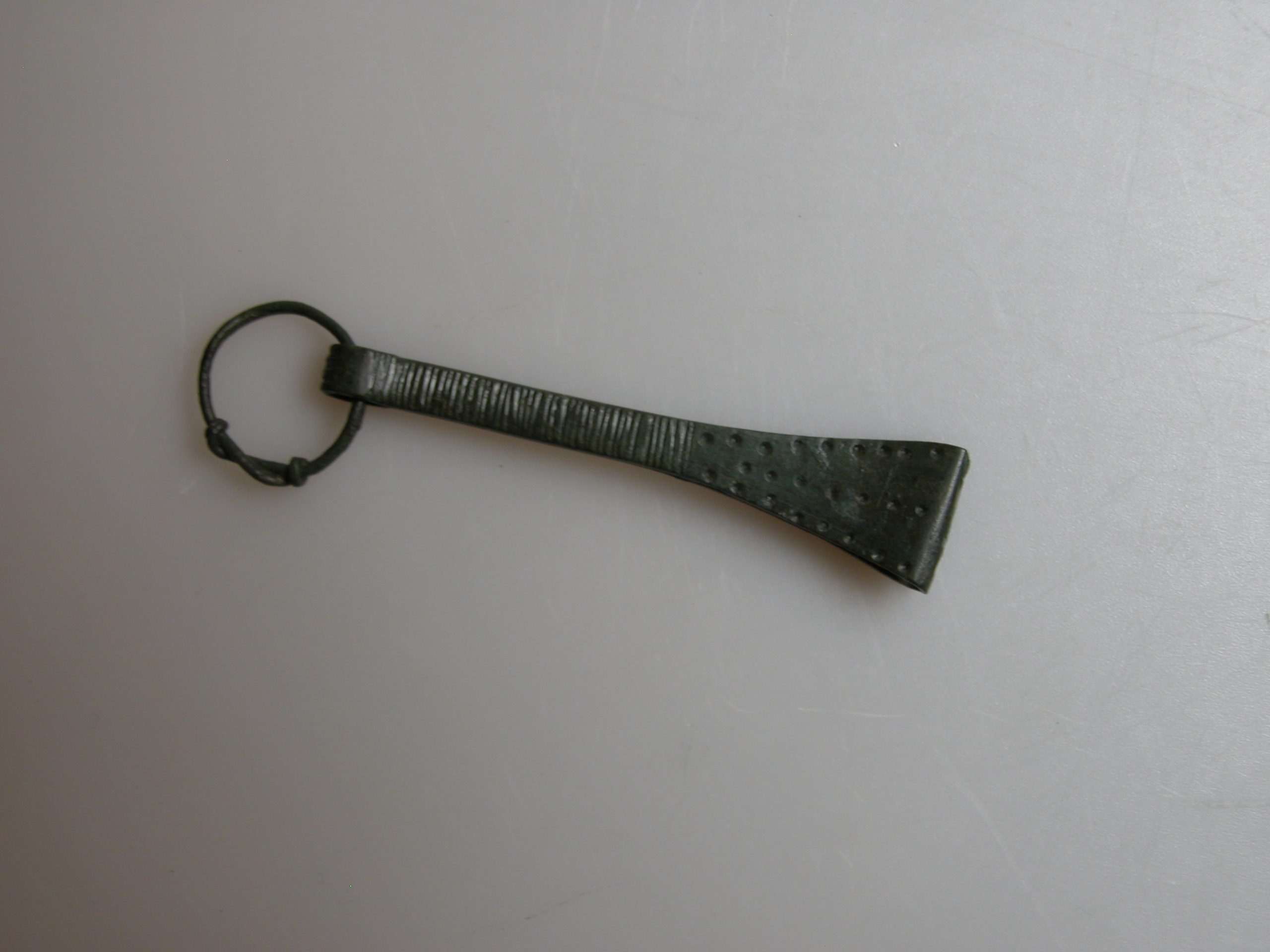

Tweezers
7th-8th Centuries AD
Copper Alloy
Tweezers are often found in Anglo-Saxon graves. They may have been worn on a necklace or attached to a belt, but either way their inclusion in a grave shows how dedicated the Anglo-Saxons were to personal hygiene.
Reference: CANCM:1980.11.1410
Can be found: The Anglo-Saxon Kingdom of Kent


Zoomorphic Brooch
Late 6th Century AD
Copper Alloy
Cast in bronze to resemble a bird. This shape has been found both in Kent and in Northern France, and it is one of the ways we know about the close links of the Anglo Saxons across the Channel.
Excavated from a site in Castle Street in 1978. Presented by Canterbury Archaeological Trust
Reference: CANCM:1978.1.210
Can be found: The Anglo-Saxon Kingdom of Kent

